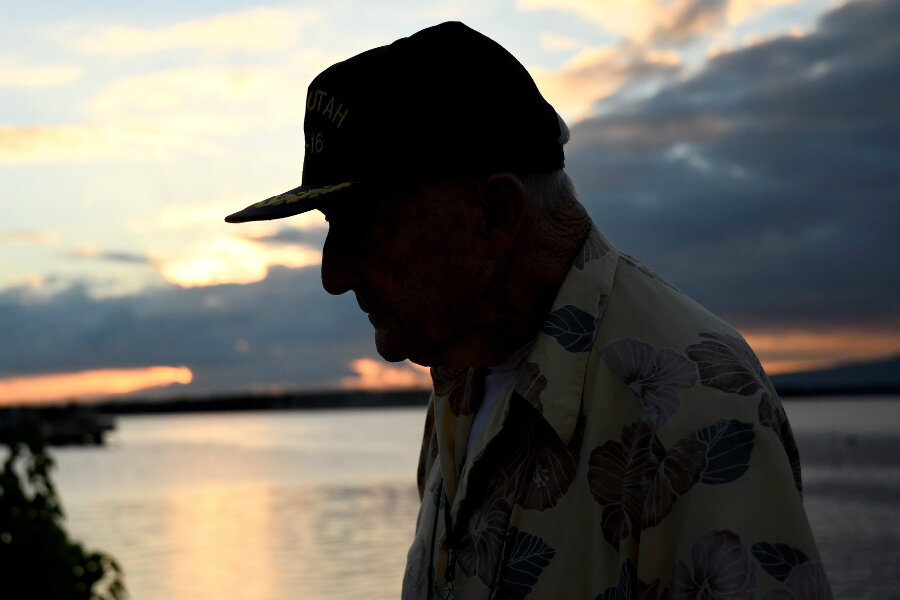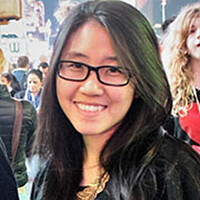Pearl Harbor: an uneasy peace 75 years after the 'Day of Infamy'
Loading...
The 75th anniversary of the attack on Pearl Harbor will be marked by many historic firsts as the United States and Japan continue a reconciliation process over the atrocities committed during World War II.
It will start with a historic visit to Honolulu, on Wednesday by the mayor of Nagaoka, Japan – hometown of the Japanese admiral who led the attack – to take part in ceremonies that seals the reconciliation effort nearly 10 years in the making. The ceremonies will culminate with Japanese Prime Minister Shinzo Abe’s visit to Pearl Harbor – the first by a Japanese leader – in late December.
Japan-US relations gained huge momentum in May when President Obama became the first American president to visit Hiroshima, site of the nuclear bombing carried out by the US during the war. The unprecedented overtures highlight Mr. Obama’s goals to promote nuclear disarmament and strengthen US-Japan ties as both countries try to ward off influence from Japan’s neighboring rivals, China and North Korea. But the actions, taken by both national and local leaders, also symbolize how the former rivals seek to set aside old wounds to promote a shared vision of peace.
“To many Americans, Pearl Harbor was a sacred place for the survivors and their animosity, and a place to glorify the war dead,” Nagaoka city official Yusuke Nishiyama, who has organized peace education and youth exchange programs with Honolulu for multiple years, told the Associated Press. “We continued our exchanges, not just on milestone anniversaries but year after year, and it was last year when we finally heard the word ‘reconciliation’ mentioned (by the Americans) for the first time.”
Nagaoka is home to Japanese Adm. Isoroku Yamamoto, the naval commander who planned the 1941 surprise attack on the US naval base in Pearl Harbor that left 2,400 sailors, Marines, and soldiers dead.
The following day on Dec. 8, 1945, President Franklin D. Roosevelt addressed the joint Congressional session with a poignant speech that has become one of the most memorable in the nation's history.
“Yesterday, December 7, 1941 – a date which will live in infamy – the United States of America was suddenly and deliberately attacked by naval and air forces of the Empire of Japan,” Roosevelt said, permanently affixing the phrase "Day of Infamy" into the narrative of Pearl Harbor.
A counterattack by the US killed 1,400 in Nagaoka during the final weeks of the war.
In 2007, the former mayor of Nagaoka, Tamio Mori, reached out to former Honolulu Mayor Mufi Hannemann during an international conference. Mr. Mori suggested they engage in youth exchanges for peace education and work on restoring friendship. Five years later, Nagaoka and Honolulu became sister cities. Nagaoka displays its famous fireworks in Hawaii as part of the exchange.
The 1941 Japanese attack on Pearl Harbor triggered the US to join World War II. Near the end of the war, the US dropped two nuclear bombs on Japan, killing between 60,000 and 80,000 people instantly in Hiroshima and 40,000 in Nagasaki. The attack preceded Japan’s surrender.
Reconciliation is a politically contentious topic as political leaders from both countries are pressured to not apologize for the actions that inflicted a deadly amount of injuries on both sides.
Obama, who won a Nobel Peace Prize for his desire to rid the world of nuclear weapons, said in a speech in Hiroshima that he came to “mourn the dead” and “find the courage, together, to spread peace, and pursue a world without nuclear weapons,” as reported by CNN.
Mr. Abe, like Obama, also said he will not be apologizing, but the visit to Pearl Harbor will be “for the sake of consoling the souls of those who died in the war,” Japan Chief Cabinet Secretary Yoshihide Suda said, according to Reuters.
“I think that the prime minister's visit will be an opportunity to send the message that the calamity of war must not be repeated and ... express the value of reconciliation between Japan and the United States," he said.
Foreign policy experts say the visits aim to showcase a tight US-Japan alliance in the face of China’s military maneuvers in the South China Sea, North Korea’s attempts at developing a nuclear arsenal and President-elect Donald Trump’s harsh attitude toward Japan.
"The planning for a Pearl Harbor visit has been in the works ever since Obama visited Hiroshima. It's mostly a reciprocal gesture and symbolic of the US and Japan burying the hatchet," said Columbia University emeritus professor Gerry Curtis told Reuters. "It sends a message to China about the strength of the US-Japan relationship [and is] probably also intended to send the same message to [President-elect Donald] Trump."
This report contains material from the Associated Press and Reuters.








